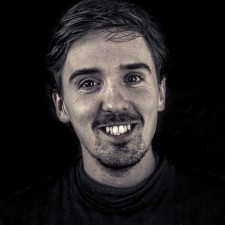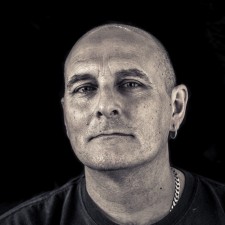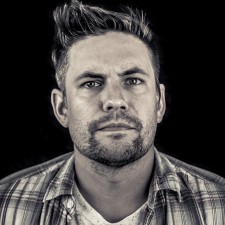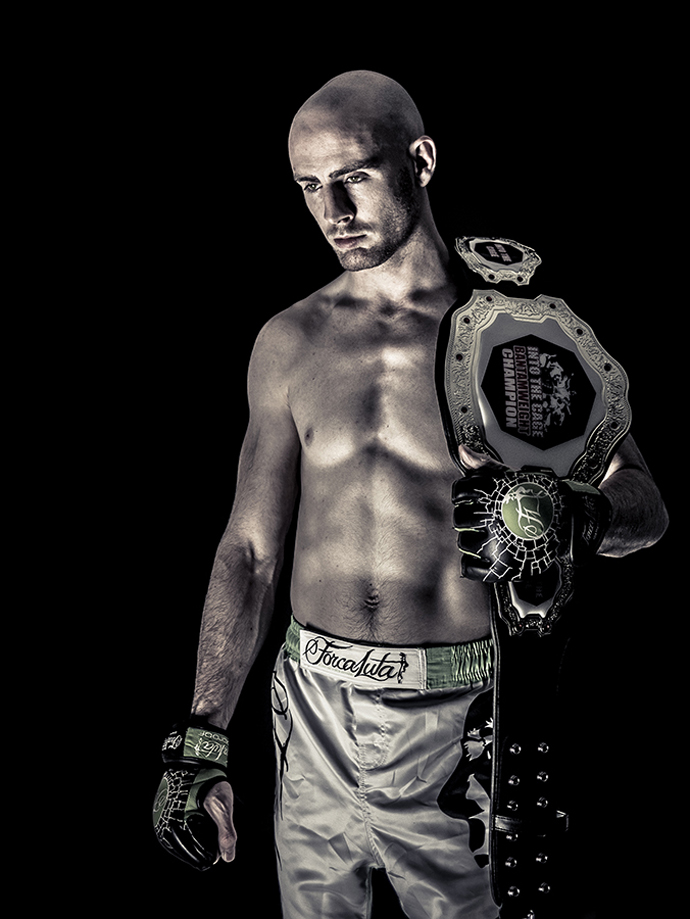I am a video games VFX artist with a passion for photography who is hopefully in the process of turning this interest into something more professional.
I have been getting more and more serious about photography over the past five years with a lot of learning and experimentation but I felt that to be taken more seriously, I had to create my own style. I first started down that route while taking photos of Aaron “Smackwell” Blackwell, the Cage Warriors fighter. I began with no specific ideas in mind and experimented with a few different lighting setups to give me something to work on with the post processing. Once I started playing around in Lightroom, I found a glimpse of something I liked so we re-shot the session with a modified lighting setup. When speaking to many portraits photographers, completely black backgrounds are not generally encouraged but in my mind, not all photographic rules apply all the time. In the same way that you can break the rule of thirds if there is a good reason for doing so, I felt the same was the case about the black background. In my situation I wanted to put all the emphasis into the face and having a black background would help with that by contrasting harshly with the bit I wanted people to concentrate on – the face and all its details.
We were both pleased with the results, but I still felt I could take the technique further. To do this I needed more models so, since I worked in an office full of them, I decided to do a series based on the diversity of people who work in video games. As someone who has been using digital graphics for almost 20 years, the post processing is something that comes naturally to me but I had to work hard with the lighting to get the images to where I wanted them and in doing so I have learnt a lot about lighting faces.
You can see Aaron’s photo is different to the others in that it’s completely black and white while the later ones do have a small, almost imperceptible amount of colour in them which is part of the evolution of the style. I am still planning to develop it further and of course hope to take a lot more photos of interesting people.
As with all forms of art, my style borrows from many others but I feel that these portraits still have my personal touch that makes them different to anything else I have seen. It’s a style that doesn’t work on everyone and suits certain kinds of faces, but all the people I chose to use this style on were more than happy with their photos. One delighted client told me that it was the best photo that had been taken of him in 50 years – which is quite a compliment since he is 50 years old!
As part of my small photography business I also do more traditional portraits, as you can see from my website, but I hope that my signature style can make me stand out a little. My other main photography interest is urban photography. Since I have London on my doorstep it’s a great place for me to experiment with photos of urban locations which you can also see on my website.
With street and urban photography being a large part of my photographic interest, portability is a big factor in selecting my equipment, which is why I switched from a standard DSLR to Micro Four Thirds about four years ago and have never looked back. The system is so much more portable and versatile but I don’t feel that it lets me down in quality. Most professional portrait photographers usually use full frame cameras but for the work I do and printing resolutions I deal with, I don’t see any difference in the end result. You only need to look at the amazing work of Sean Archer who is also a Micro Four Thirds portrait artist (and incredibly does all his work with natural light) to see what can be achieved with this format.
As for the future, I will continue to evolve my style as well as try to set up some alternative London photography tours where I hope to take people to more interesting locations rather than the usual tourist spots. [Official Website]















